Floor-cloth maker takes advantage of botanical abundance
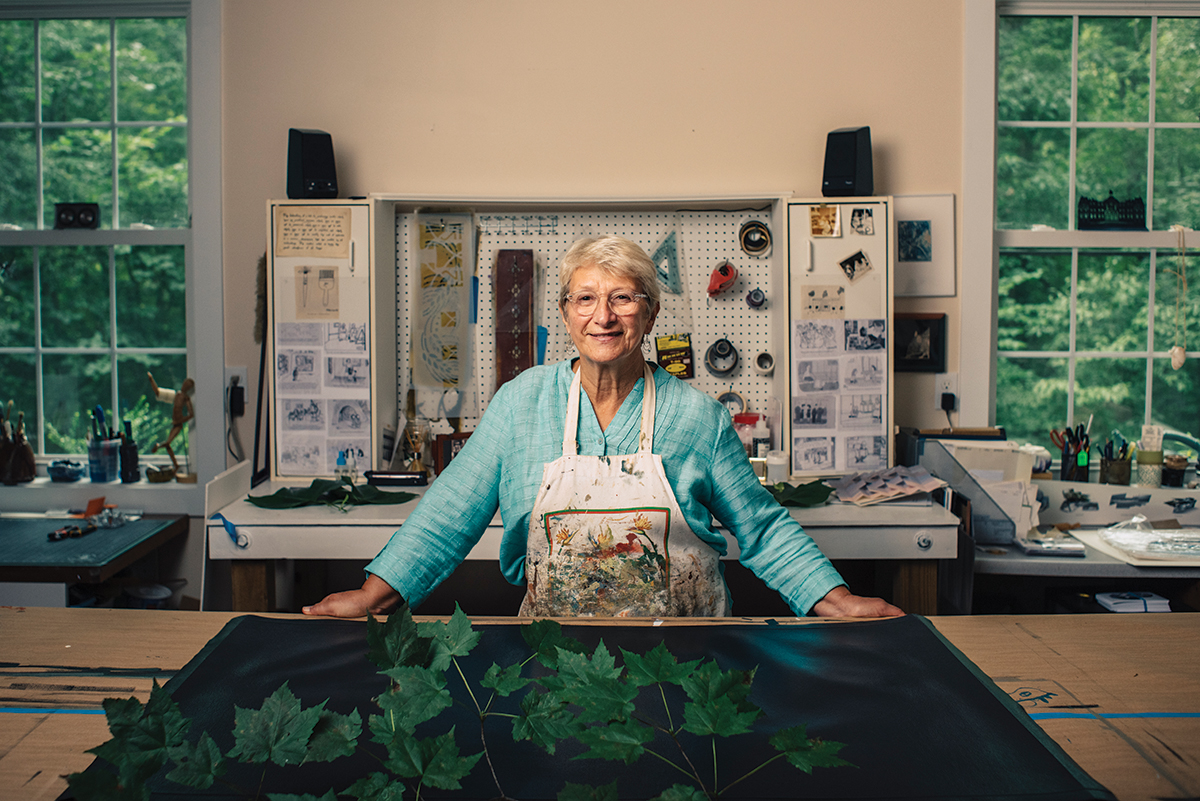
Lynette Miller will turn this fresh batch of foliage into a heritage keepsake.
Portrait by Clark Hodgin
Twenty years ago, Lynette Miller left her job teaching photography at a university in Western New York to move to Western North Carolina, trading harsh, endless Buffalo winters for more pleasant seasonal living in the Southern mountains. Getting settled into her new home, she needed something to cover the floor under the dining-room table. Rather than heading to a furnishings store or scouring online, she turned to an article about “floor cloths” (handmade canvas rugs) that a friend had recently sent her. “It was about how to paint a floor cloth if you wanted to tackle it yourself, and I thought it sounded interesting,” she recalls. “I had a bare floor in my dining room, so I thought I’d give it a try.”
Miller, whose artistic background also includes printmaking, saw an opportunity to turn the piles of leaves in her yard into functional art that would reflect the beauty of her new surroundings. “I had experience with contact printing, and I thought, why can’t I just contact-print leaves?”
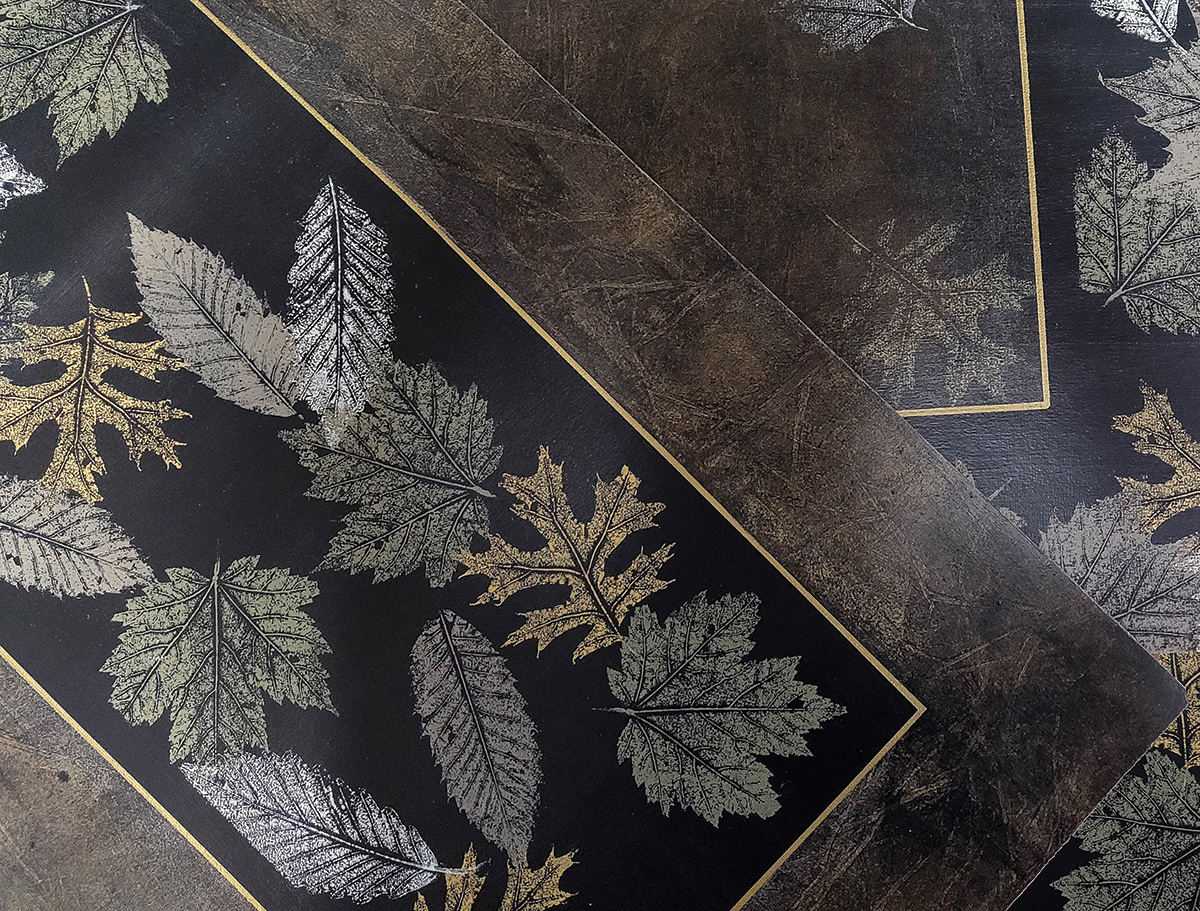
The only way to find out was to get to work. She ordered a roll of gesso-primed canvas, put a couple coats of base paint on top of that, picked up some leaves from her backyard, rolled paint onto them one at a time, slapped them on the canvas, applied pressure on the leaf to get all the details, then removed the actual leaf to reveal a leaf print. “The process isn’t that complicated, but it is time consuming,” she explains. “You have to wait for everything to dry between layers — and there are many layers, at least the way I do it.”
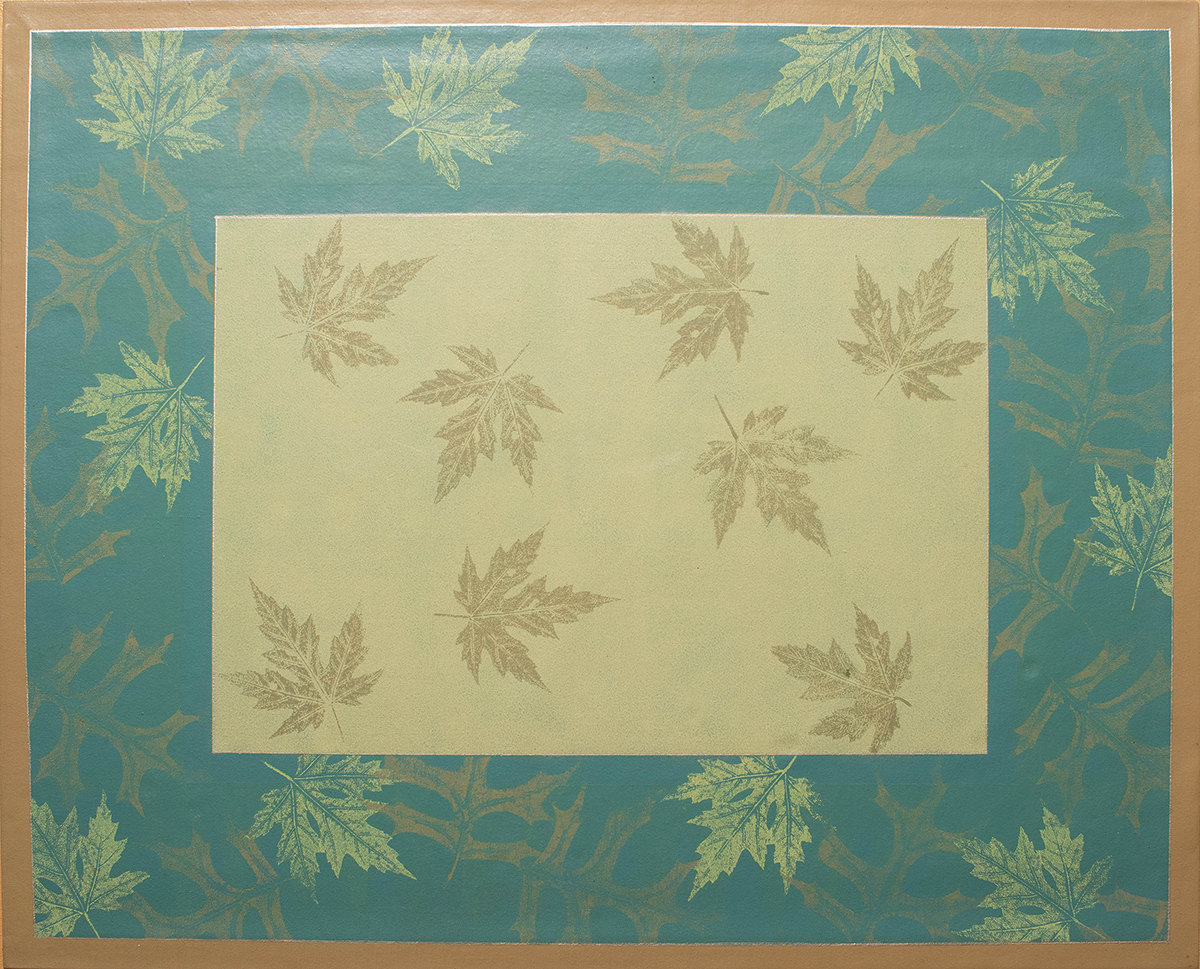
The way she does it has changed over the years, from her first piece, which she admits with a laugh she painted over multiple times, to the technique she developed of incorporating texture, geometric shapes juxtaposed with “organic and unpredictable” leaves, finished with at least five coats of flexible polyurethane. “They are durable and so easy to wipe clean,” she says. “They’re often called ‘poor man’s carpet.’”
The floor cloth under her table was 8’ by 10’, but when she decided to pursue a market for what she named FloraCloths, she sized down to placemats, 2’x4’, and 3’x5’ floor cloths, which she says work well for entryways, halls and in front of kitchen sinks.
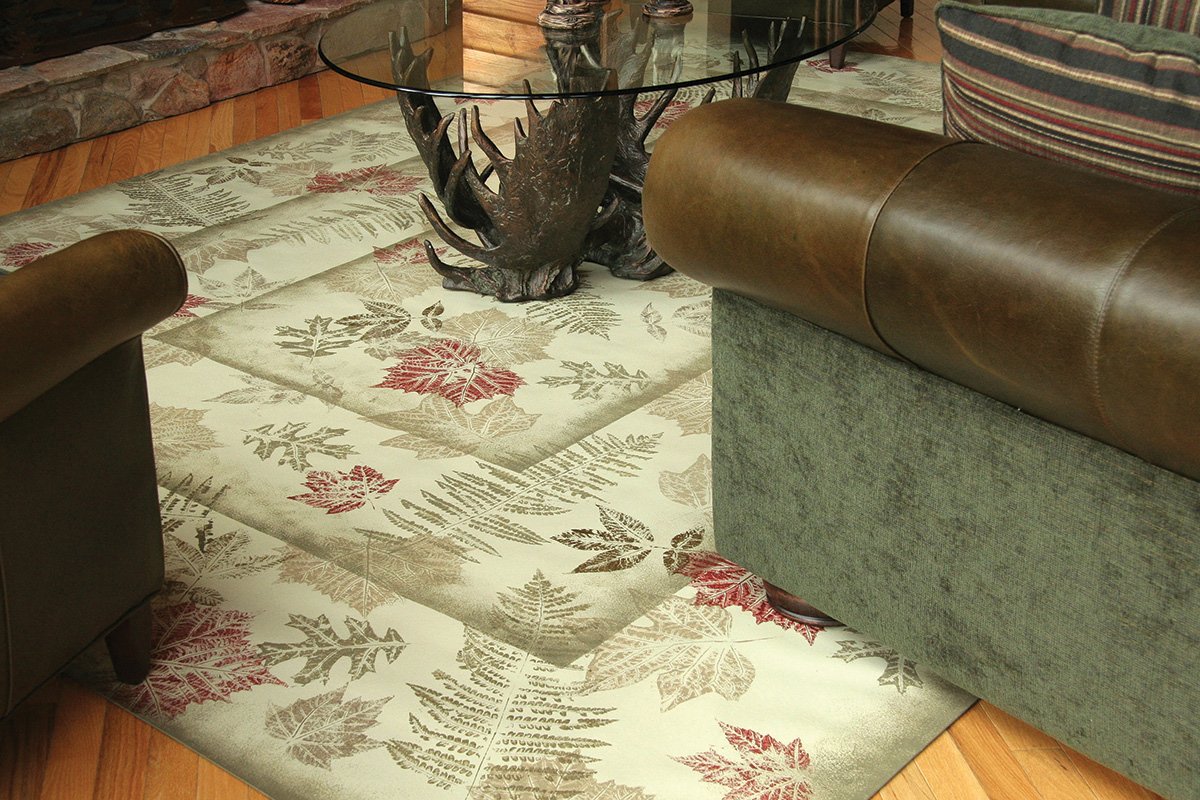
John Cram, owner of New Morning Gallery in Biltmore Village, had never heard of floor cloths, but carried them in his shop for a time. The owner of Mountain Made in Grove Arcade, who still sells FloraCloths, had one in front of the store register for eight years until a customer purchased it from under her own feet.
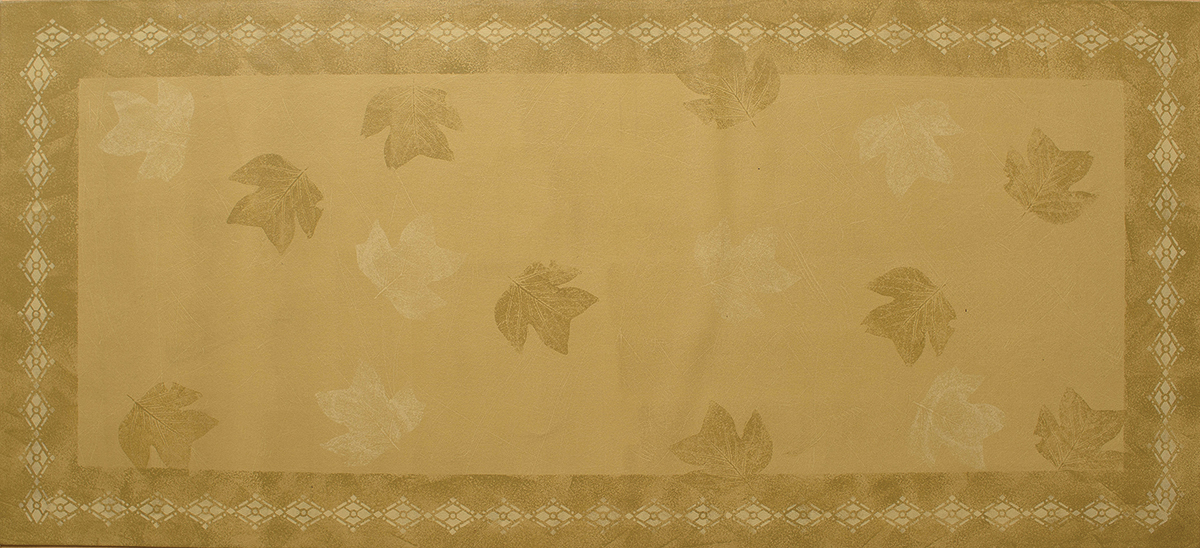
Miller laughs when she says she is “not exactly” retired, but she is winding down, segueing to primarily commission-based work. She sends clients to the paint store to choose chips so she gets the colors right, but she determines the ultimate design and collects the leaves. “Every leaf, even from the same tree, is unique,” she says.
Lynette Miller, Black Mountain. FloraCloths are sold at Mountain Made (1 Page Ave. #123, inside the Grove Arcade, downtown Asheville, mtnmade.com). The artist also works by commission: floracloths.com.
